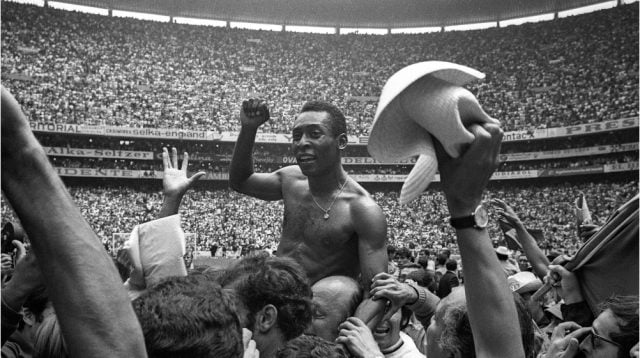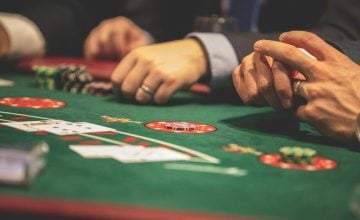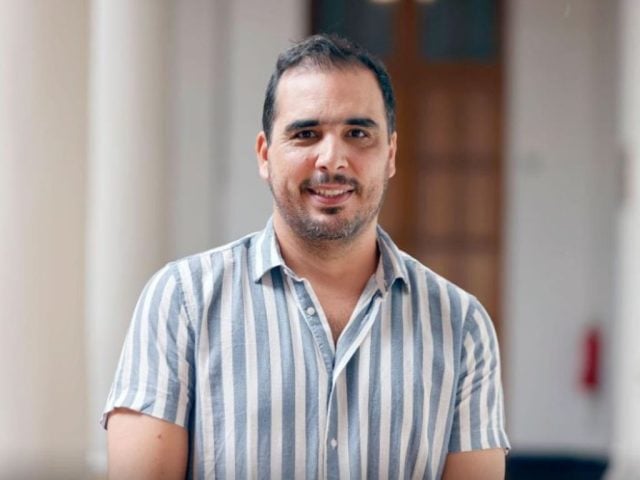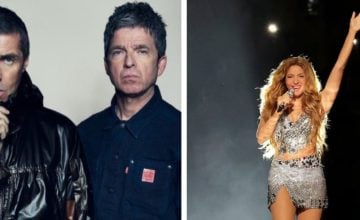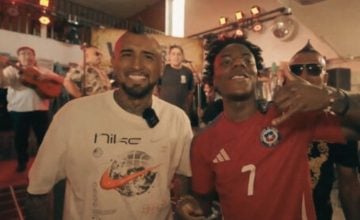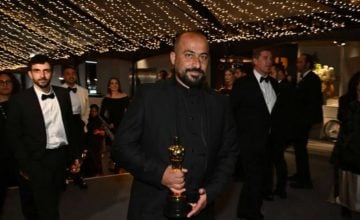Edson Arantes do Nascimento, better known as Pelé, died this Thursday, December 29, 2022 at the age of 82 at the Albert Einstein Israeli Hospital.
On December 21, the doctors reported «a progression» of his colon cancer with renal and cardiac dysfunction, reports RT.
The former soccer player and also former Sports Minister of Brazil had been hospitalized at the Albert Einstein Israeli Hospital, in the south of Sao Paulo, since November 29 to undergo a re-evaluation of the chemotherapy for the colon tumor and a treatment for a respiratory infection.
The 82-year-old idol arrived at the health center after he presented generalized swelling throughout his body. In addition, the medical staff detected generalized edema and decompensated heart failure.
The former soccer star, three-time world champion with the Brazilian team, had been fighting for his health since a colon tumor was detected during routine exams in 2021.
Pelé’s health had deteriorated in recent days and the Albert Einstein Israeli Medical Center reported on Wednesday that the Brazilian idol had a «progression of the oncological disease» and that he required «greater care related to kidney and heart dysfunction».
Thus, Pelé’s daughter, Kely Nascimento, reported on her social networks that the family suspended Christmas at home and that they would stay in the hospital on medical recommendation.A childhood full of sacrifices but surrounded by football
Pelé was born on October 23, 1940 in the Brazilian town of Tres Corazones, in the state of Minas Gerais, in southeastern Brazil.
Son of João Ramos do Nascimento and María Celeste Arantes, he had a deprived childhood but it was always linked to football.
Pelé’s father, nicknamed ‘Dondinho’, was a front-runner in football and came to wear the Atlético Mineiro shirt, but he had the misfortune of injuring his knee shortly after making his debut. As ‘Dondinho’ did not play, the club stopped paying his salary, so Pelé, just a child who already showed his prodigious skills with the ball, sacrificed hours of his usual street football games to help his family financially as a shoeshine boy .
«We were poor, but we could always work», recalled the football legend in the documentary that portrays his life and that was released in 2021 on the Netflix platform.
In 1956, with just 15 years of age and motivated by his father, Pelé became a professional player for Santos FC in the city of the same name, located 80 kilometers from Sao Paulo. In the ‘Peixe’ (Fish), named for its proximity to the sea, Pelé would not only develop almost his entire career, he would also transform ‘Santos’ into what it had never been able to be until then: a popular and successful institution in sporting terms.Pelé, the little world star
Pelé himself recounted that in 1950 he saw his father cry in front of the radio. Contrary to what the entire people expected, Brazil had been defeated in the World Cup final that was played in the country. In a packed Maracana stadium, the host fell 1-2 against Uruguay, in what became known as ‘El Maracanazo’. Given the discomfort of ‘Dondinho’, his son, to console him, promised him that he would win the world cup for him. He was just 10 years old.
In 1958, Pelé would celebrate his first Paulista championship with Santos, being the top scorer in the competition with a huge mark: 58 goals in 38 games.
That same year, the star was called up to the Brazilian team for the World Cup in Sweden, a team that the ‘verdeamarelha’ would defeat in the final with a superlative performance, as in almost the entire tournament, by Pelé, who would score two goals for a 5 to 2 final.
It was the first time that Pelé left his country. In a little less than a month, he went from being questioned by the press, which in the preview of the World Cup considered him «too young», to being received in his land as a monarch. A black and poor king who, as a teenager, had all of Brazil at his feet.’Santos’, from nothing to glory
Pelé’s figure had become much bigger than his own team, but soon Santos, hand in hand with the eternal ’10’, would achieve glory and national and international fame.
The ‘black and white’ (aurinegra) squad would go on to dominate local football for almost the entire decade, winning the Brasileirão, the highest national league, in 1961, 1962, 1963, 1964, 1965 and 1968, in addition to the São Paulo tournaments of 1958, 1960, 1961, 1962, 1964, 1965, 1967, 1968, 1969 and, already in the following decade, in 1973.
Away from his homeland, the fearsome Santos de Pelé added to its list, the Libertadores Cups of 1962 and 1963, and would lose the semifinal of 1964 against Independiente de Avellaneda (Argentina), champion that year of the first of the seven editions it has held so far. today the ‘King of Cups’. In addition, the ‘Peixe’ obtained the Intercontinental Cups of 1962 and 1963, the latter with a controversial arbitration that played in their favor.
Pelé’s and Santo’s moment of worldwide popularity, opened doors for the club not only throughout America, but also in Europe, where the matches were already televised. The team participated in innumerable and frantic tours and faced top-level rivals at the time, such as Real Madrid, Inter Milan, Sporting de Portugal or Barcelona, among others. It was in one of those exhausting journeys that, having dazzled all of France, the press would baptize the Brazilian idol as the ‘King of Football’.
In addition to being the best football player on the planet, Pelé also emerged as a movie and commercial star, to the point of becoming the first millionaire football player in history. But, despite the fact that there were several giants from the old continent who tried to sign him, Edson Arantes do Nascimento preferred to remain at Santos.
In the book ‘Pelé: because football matters’, by Brian Winter, the man himself would explain the reasons for his decision: «Many of the best teams in Europe, including AC Milan and Real Madrid, have made me proposals over the years, but the press went crazy and I never thought of playing seriously outside of Brazil. I had my reasons. In short, I loved the rice and beans that my mom made, I felt comfortable and happy in my country. My mom and dad lived a few meters from our house, the temperature was always 25 degrees and the beach was great».Chile 1962 and England 1966: violence in the football field
The world championships in Chile 1962 and England 1966 were characterized by violence on the field of play and permissive refereeing, if not scandalous.
In Chile, the ‘King’ would be seriously injured in the second game of the tournament against Czechoslovakia, a rival that Brazil would beat in the final 3-1, although without Pelé, who would miss almost the entire competition due to rough play.
In 1966, the two-time champion arrived as a favourite, with Pelé and Garrincha as the best in the world. However, the ’10’ would receive endless kicks in the first and third games against Bulgaria (2-0) and Portugal (1-3), respectively. In the second game, against Hungary (1-3), coach Vicente Feola had decided to protect his best card from violence. The ‘canarinha’ would be eliminated in the group stage and the locals would win the tournament with the remembered and illegitimate ‘ghost goal’ against Federal Germany.Mexico 70, the total consecration of Pelé
At the age of 29, disappointed and saddened by the handling of the previous cups, Pelé was on the verge of not participating in the 1970 World Cup in Mexico. But he was still the greatest exponent of global football and the dictatorship of Emílio Médici pressured him to play.
That team from Brazil was considered one of the best of all time, with figures of the stature of Rivelino, Gerson, Tostao and Jairzinho accompanying the ‘crack’ (Pelé), already mature, experienced and intelligent for team play.
Pelé was, once again, the main figure of a team that won all the games without incident, including the final, in which they overwhelmed Italy 4-1.
The Brazilian star was at the top, the previous year he had scored his 1,000th goal and there was no one to shadow him.An offer he couldn’t refuse
In 1975, having won everything with Santos and his team, Pelé accepted a juicy offer of 4.5 million dollars to play for the New York Cosmos, of the then unknown and not very competitive American league. There, he would score more than 60 goals and win a NASL title. He would retire from football two years later, on October 1, 1977, in a friendly match between the Cosmos and Santos, and in which, ‘O Rei’, would play for each team for a while.
Including friendly matches, the insatiable front-runner left a mark of 1,284 goals in 1,351 games played.Controversies and private life of Pelé
Throughout his successful career, Pelé was never identified with any party or political sector, but his sporting achievements and his triumphant and thriving image were taken advantage of by all governments, including dictatorships.
The fact that the star always had an attitude of open doors with all the powers caused him some problems in the public opinion. His lack of political stance in times of military governments, with which he met several times, was read as support for a bloody and anti-democratic process that would only end in 1985.
As for the footballer’s love life, he had wives, girlfriends and occasional lovers. Pelé has recognized eight children in total, between ‘legitimate’ and others that he took years to recognize.
He had four descendants from his first marriage to Rosemeri Cholbi (1966-1978); two with his second wife, Assíria Lemos (1994-2008), and two other extramarital daughters. One of them, the politician Sandra Regina Machado, (whose mother was a domestic employee of the former football player) was recognized by Pelé after an extensive legal battle that lasted almost three decades. Machado died of cancer on October 17, 2006.
Brazil and the sports world mourn the death of the ‘football king’.
